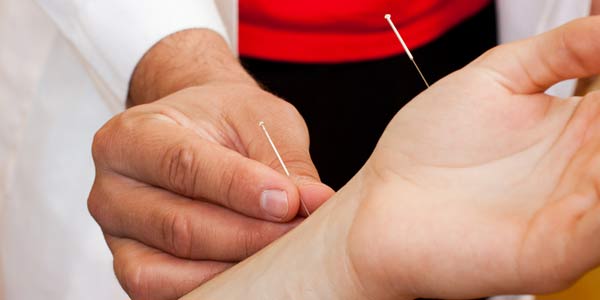Acupuncture Provides Small, but Real Help with Chronic Pain

Acupuncture may be modestly better than a placebo for the treatment of chronic pain, a new review suggests.
Researchers analyzed information from nearly 18,000 patients with chronic back, neck or joint pain, or headaches.
Patients who received acupuncture experienced a greater reduction in their pain compared with those who received standard pain treatments without acupuncture, and those who received fake acupuncture treatment, called "sham" acupuncture. The benefit of real acupuncture over sham acupuncture was only slight, the researchers said.
The findings suggest that overall, acupuncture is effective, and is a reasonable treatment option for patients with chronic pain, the researchers said.
Because real acupuncture was superior to sham acupuncture, the results suggest that acupuncture is not completely a placebo, or a treatment that benefits patients simply because they believe it will work, the researchers said.
However, because the difference between real and sham acupuncture was small, it's likely that most of the benefit of acupuncture is indeed due to theplacebo effect, the researchers said.
In general, "about a third of the effect of any treatment is a placebo effect," said study researcher Andrew Vickers, of Memorial Sloan-Kettering Cancer Center, in New York City. "In acupuncture, it's more like two-thirds, Vickers said.
Sign up for the Live Science daily newsletter now
Get the world’s most fascinating discoveries delivered straight to your inbox.
Many patients with chronic pain who resort to acupuncture have not responded to standard treatments, or experienced significant side effects from them, Vickers said.
Treating chronic pain
About 3 million Americans receive acupuncture each year, and chronic pain is the most common reason for the therapy, the researchers said. Because researchers have not determined how acupuncture could work to reduce pain, its use is controversial.
In the new study, Vickers and colleagues analyzed information from 17,922 patients who participated in 29 studies conducted in the United States, United Kingdom, Germany, Spain and Sweden. Many previous studies of acupuncture were not rigorously designed, the researchers said, and they excluded these from their analysis.
In the included studies, participants with chronic pain were randomly assigned to receive acupuncture, sham acupuncture or no acupuncture. Their pain was assessed at least four weeks after treatment.
In the sham acupuncture procedures, needles were inserted too shallowly to stimulate an acupuncture point, or using a machine with a tip that causes a prickling sensation, but did not actually push a needle into the skin.
Patients who received acupuncture reported less pain after treatment than those who received no acupuncture or sham acupuncture.
After treatment, the percentage of patients reporting their pain was "much better" was 30 percent for those who received no acupuncture, 42.5 percent for those who received sham acupuncture, and 50 percent for those who received real acupuncture, Vickers said.
Acupuncture vs. placebo
The new study gives "some robust evidence that acupuncture seems to provide modest benefits over usual care for patients with diverse sources of chronic pain," Andrew Avins, a researcher at Kaiser-Permanente in Oakland, Calif., wrote in an editorial accompanying the study.
However, the benefits of acupuncture seem to come primarily from the placebo effect, Avins said, and acupuncture critics will be sure to point this out. After all, drugs are required to perform better than a placebo before they are approved for use, he said.
Still, the performance of a therapy against a placebo is not the only way to measure the treatment's effectiveness, Avins said.
"At the end of the day, our patients seek our help to feel better, and lead longer and more enjoyable lives," Avins said. "Perhaps a more productive strategy at this point would be to provide whatever benefits we can for our patients, while we continue to explore more carefully all mechanisms of healing," Avins said.
The study and the editorial are published online today (Sept. 10) in the journal Archives of Internal Medicine.
Pass it on: Acupuncture is a reasonable treatment option for patient in chronic pain.
This story was provided by MyHealthNewsDaily, a sister site to LiveScience. Follow Rachael Rettner on Twitter @RachaelRettner, orMyHealthNewsDaily @MyHealth_MHND. We're also on Facebook & Google+.

Rachael is a Live Science contributor, and was a former channel editor and senior writer for Live Science between 2010 and 2022. She has a master's degree in journalism from New York University's Science, Health and Environmental Reporting Program. She also holds a B.S. in molecular biology and an M.S. in biology from the University of California, San Diego. Her work has appeared in Scienceline, The Washington Post and Scientific American.









